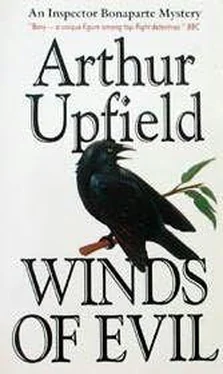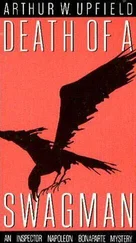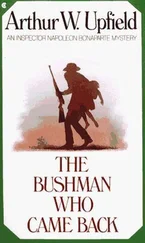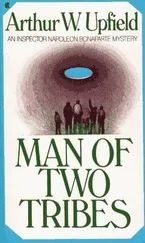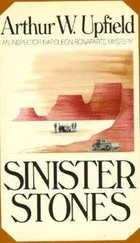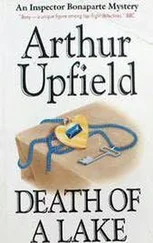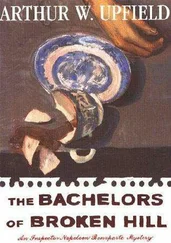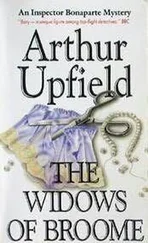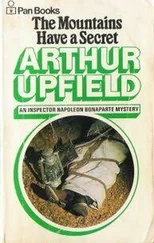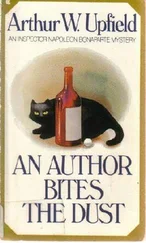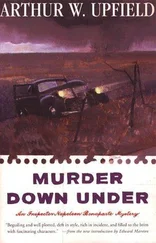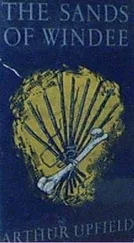Arthur Upfield - Winds of Evil
Здесь есть возможность читать онлайн «Arthur Upfield - Winds of Evil» весь текст электронной книги совершенно бесплатно (целиком полную версию без сокращений). В некоторых случаях можно слушать аудио, скачать через торрент в формате fb2 и присутствует краткое содержание. Жанр: Классический детектив, на английском языке. Описание произведения, (предисловие) а так же отзывы посетителей доступны на портале библиотеки ЛибКат.
- Название:Winds of Evil
- Автор:
- Жанр:
- Год:неизвестен
- ISBN:нет данных
- Рейтинг книги:4 / 5. Голосов: 1
-
Избранное:Добавить в избранное
- Отзывы:
-
Ваша оценка:
- 80
- 1
- 2
- 3
- 4
- 5
Winds of Evil: краткое содержание, описание и аннотация
Предлагаем к чтению аннотацию, описание, краткое содержание или предисловие (зависит от того, что написал сам автор книги «Winds of Evil»). Если вы не нашли необходимую информацию о книге — напишите в комментариях, мы постараемся отыскать её.
Winds of Evil — читать онлайн бесплатно полную книгу (весь текст) целиком
Ниже представлен текст книги, разбитый по страницам. Система сохранения места последней прочитанной страницы, позволяет с удобством читать онлайн бесплатно книгу «Winds of Evil», без необходимости каждый раз заново искать на чём Вы остановились. Поставьте закладку, и сможете в любой момент перейти на страницу, на которой закончили чтение.
Интервал:
Закладка:
“Show ’em!” snapped Simone, striding to the claypan.
Bony pointed to the outline of one shoe-heel he had mademore plain with a match point.
“Someone drew that,” Simone said scornfully.
“I did,” admitted Bony.“But here is another, and here another, which I have not touched.”
The sergeant squinted and could see nothing.
“Like hell, there are. You drew that mark on purpose to mislead the police.”
“If you stand here and bend low and so look along the surface of the claypan, you will see four heel-marks beside the one I have outlined,” urged Bony politely.
With ludicrous effort, Simone stooped and screwed his eyes to pin-points. Then he jerked straight and snorted:
“I can’t seeno heel-prints. Theyain’t there, and you know it. Oh, no, Mister Fisher! You’ve had your little joke.”
When he moved away, Constable Lee took his place and bent low. After a little period of strain he said with semi-conviction:
“I think I can see them.”
“You can’t see nothing, Lee,” raged the sergeant. “You imagine you see tracks ’costhis nig said theywas there. Come on! Enough of this. We’ll go and interview the victim. You come, too, Mister Elson, so’s you can see the results of a dirty piece of work. That goes for you, too, Mister Fisher. And don’teither of you ever forget that I can reach out and take you in just when I want to. This time I’m not going back to the Hill without a prisoner.”
And then that kookaburra opened wide its beak and cackled and screamed and chuckled, paused for breath and then gave himself a hearty encore.
Chapter Ten
Winged Allies
AS BONY HAD explained to Constable Lee, the detection of criminals in a city is much easier than the detection of the rarer criminal in the bush. Detectives engaged on city crime receive many important clues from the underworld itself. The allies of a city detective are many, because the criminal operates against a static background, such as a house interior, or even a street. The city detective, trained to follow defined lines of investigation, is out of his element when his background of crime changes from the static to become composed of ceaselessly moving sand and the surface of the virgin earth which is exposed to the constant action of sun and wind.
The keen city detective goes to science for assistance as well as for establishing proof. The camera, the microscope, acids and reagents, all are allies of the city detective. Without these scientific allies, in addition to innumerable human contacts, the city-trained detective is lost when investigating a really well-planned crime in the wild bush. Actually, Sergeant Simone was judged harshly for his failures at Carie, for here in the bush he was without his customary allies.
Bony had allies of an entirely different kind, but many of whom were to him as valuable as scientific apparatus is to his city colleagues. For assistance, he called on the birds and the ants, vegetable growths and natural processes. Phenomenal eyesight and the gift of calm patience contributed largely to his successes. Of all his many assistants, he regarded Time as the most important. It was his firm belief that the passage of Time never buried a crime. It was invariably the criminal who strove to bury his crime, and Time which removed the earth and exposed it.
The day following his meeting with Dr. Mulray, Stella Borradale and Sergeant Simone, Bony began an exhaustive examination of the trees along Nogga Creek, beginning with those meeting over the Broken Hill road and that climbed by Donald Dreyton. The wind, having that pressure designated by seamen as a breeze, constantly agitated the foliage. For this he was thankful, as he did not want sharp eyes glued to the business ends of binoculars to observe his movements through the unnatural movement of tree-branches. Even as it was, he was obliged to work carefully in order to conceal his activities from the curious Mrs. Nelson.
High in the tree climbed by the fence-rider, he found a living branch sucker snapped close to the parent branch and hanging by a strip of its smooth bark. The resilience of the sucker was of such strength as to defeat the strongest wind to break it. A mischievous galah or cockatoo had not done the damage, because the break was too broad, and Bony decided that it had been done by a man climbing into the tree.
Himself wedged between a branch and the tree-trunk, the detective closely examined the broken ends of the sucker and the strip of bark holding them together. The bark still retained its soft green colouring, but it was the degree of remaining sap which led Bony to the conviction that at least ten days had passed since this sucker was damaged. That meant it had been broken by a man’s body or boot days before Dreyton had climbed the tree and several days before the attack on Mabel Storrie.
Why the fence-rider had climbed the tree was a question now nagging for ananswer. Had Dreyton seen something among its branches, causing him to climb the tree? Had the party of quarrelling crows flown to the leopardwood-tree from this tree at Dreyton’s approach, and thus had led him to the object over which they quarrelled? Any strange object in a tree would ultimately be discovered by the crows, who would announce the discovery by theircawings. That the crows had not returned to the box-tree after Dreyton had left it might indicate that the object of their insatiable curiosity had been removed by him.
However, all this was conjecture of less moment than the fact that someone had climbed into the tree before Mabel Storrie was nearly murdered. Allied to this fact was the evidence that someone had climbed into the trees overhanging the Broken Hill road and, almost certainly, had dropped from a branch when she was passing beneath them.
Which of the many people living in and around Carie would climb trees? Boys and many girls, too, are great tree-climbers, and of boys and girls Carie had its normal share. But these trees were a full mile from the township. Nevertheless, a mile, or even more, is nothing for healthy youngsters to walk after birds’ eggs and bees’ honey. There were no children at Wirragatta or at Storrie’s Selection, but there were two youths employed on Wirragatta who were capable of climbing trees after young galahs.
Then Bony’s next step was to ascertain if the galahs’ nests had been robbed, and to do this he did not propose to make inquiries of the townspeople or those at the station.
From introspection his brain again took charge of his eyes. They probed the green-clothed branches of the tree in which he was perched and those of neighbouring trees that were almost interlocked. His gaze moved with deliberate system, moving along each successive branch from trunk to extremity. Thus it was eventually that his gaze became applied to a particular section of a particular branch of the tree next his. Without difficulty, or danger of falling, he passed from tree to tree, and thus was able to bring his gleaming eyes to a point twelve inches from the section of branch which had caught his attention.
For some time he studied this section of living wood, brows knit, brain working to establish the cause of a certain phenomenon. For a distance of eighteen inches the bark of the section was of a different tint. He gripped the same branch with both hands a little beyond the tinted section and began to rasp it. The action produced exactly the same tint-soft rust on the background of grey-green.
The result of the experiment pleased him.
At no little risk of accident, the detective climbed and swunghimself from branch to branch, on which he was able to see the same discoloration, for some sixty yards, when he reached a point in the line of trees where there was a break. Down the last tree he slowly descended, and on the trunk he found unmistakable evidence it had often been climbed.
Читать дальшеИнтервал:
Закладка:
Похожие книги на «Winds of Evil»
Представляем Вашему вниманию похожие книги на «Winds of Evil» списком для выбора. Мы отобрали схожую по названию и смыслу литературу в надежде предоставить читателям больше вариантов отыскать новые, интересные, ещё непрочитанные произведения.
Обсуждение, отзывы о книге «Winds of Evil» и просто собственные мнения читателей. Оставьте ваши комментарии, напишите, что Вы думаете о произведении, его смысле или главных героях. Укажите что конкретно понравилось, а что нет, и почему Вы так считаете.
